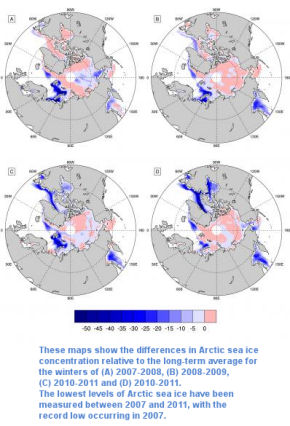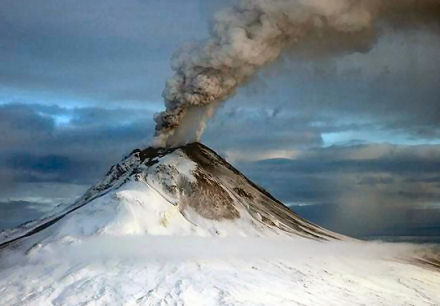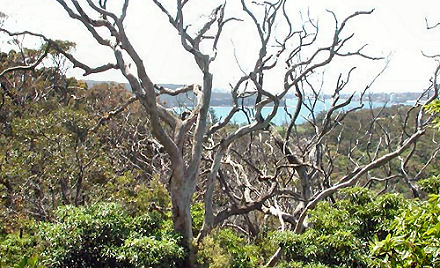
New evidence put forward by Georgia Institute of Technology atmospheric scientists links increasingly heavy snowfalls in the Northern Hemisphere to declining summer ice cover in the Arctic.
Records show that since the level of Arctic sea ice set a new record low in 2007, significantly above-normal winter snow cover has been seen in large parts of the northern United States, northwestern and central Europe, and northern and central China. During the winters of 2009-2010 and 2010-2011, the Northern Hemisphere measured its second and third largest snow cover levels on record.
Researcher Judith Curry says her study demonstrates that the decrease in Arctic sea ice area is linked to changes in the winter Northern Hemisphere atmospheric circulation. “The circulation changes result in more frequent episodes of atmospheric blocking patterns, which lead to increased cold surges and snow over large parts of the northern continents,” she explained.
Curry and her co-researchers analyzed observational data collected between 1979 and 2010 and found two major factors that could be contributing to the unusually large snowfall in recent winters – changes in atmospheric circulation and changes in atmospheric water vapor content – which are both linked to diminishing Arctic sea ice. Strong warming in the Arctic through the late summer and autumn appears to be enhancing the melting of sea ice.
“We think the recent snowy winters could be caused by the retreating Arctic ice altering atmospheric circulation patterns by weakening westerly winds, increasing the amplitude of the jet stream and increasing the amount of moisture in the atmosphere,” explained co-researcher Jiping Liu. “These pattern changes enhance blocking patterns that favor more frequent movement of cold air masses to middle and lower latitudes, leading to increased heavy snowfall in Europe and the Northeast and Midwest regions of the United States.”
The simulations showed that diminishing Arctic sea ice induced a significant surface warming in the Arctic Ocean and Greenland/northeastern Canada, and cooling over northern North America, Europe, Siberia and eastern Asia. The models also showed above-normal winter snowfall in large parts of the northern United States, central Europe, and northern and central China.
The researchers say the findings, detailed in Proceedings of the National Academy of Sciences, could be used to improve seasonal forecasting of snow and temperature anomalies across northern continents.
Related:
Discuss this article in our forum
Arctic Heatwave Sends Climatologists Back To Drawing Board
The Incredible Shrinking Arctic
Climatologists Identify Areas To Be Most Affected By Warming

















Comments are closed.